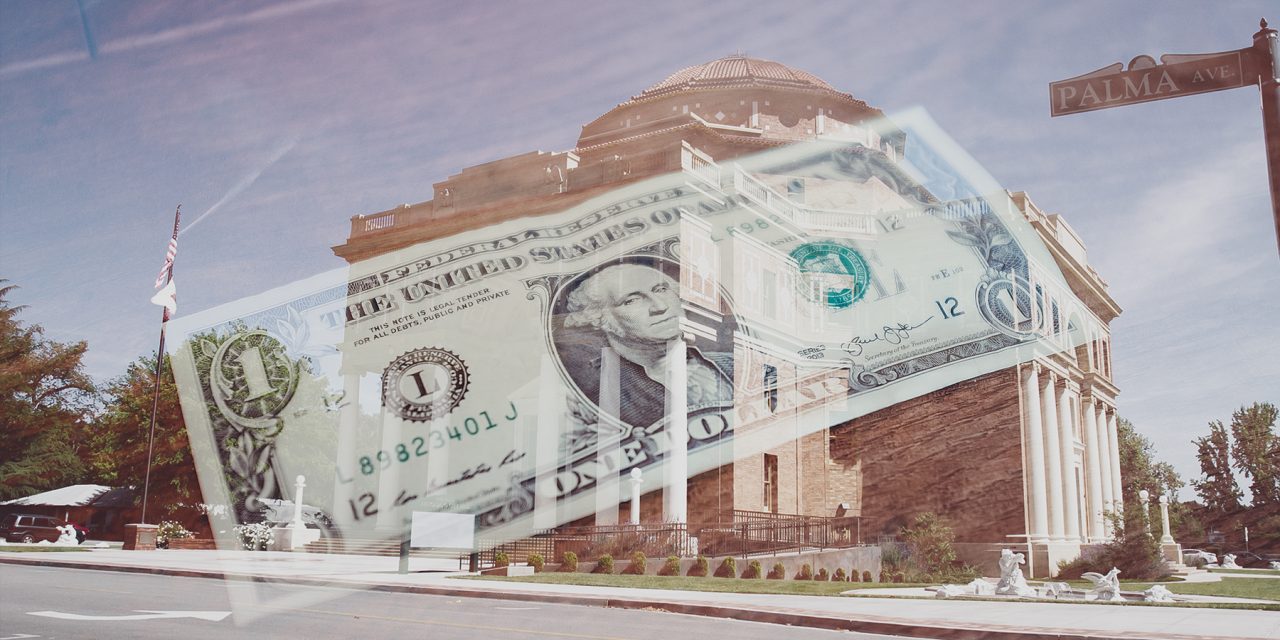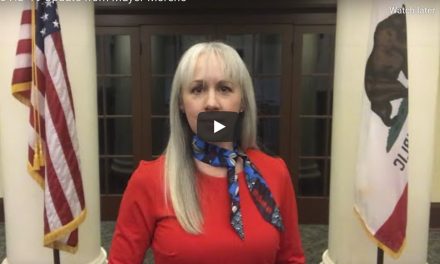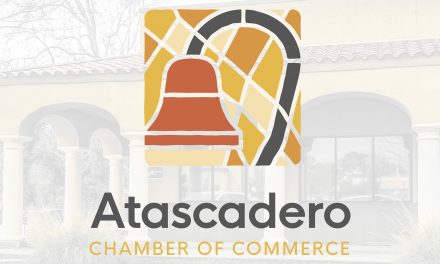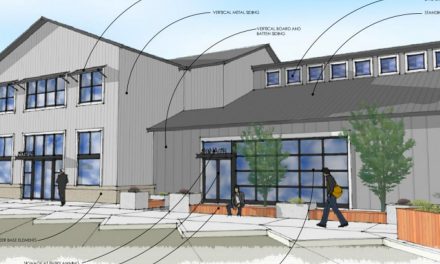Leaders agree Atascadero ‘unsustainable’ without additional tax
Tuesday night via SLO-Span teleconferencing, the Atascadero City Council voted to unanimously add a one percent sales tax increase onto the 2020 ballots that will be voted on this November.
The need for the tax increase was presented by Atascadero City Manager Rachelle Rickard that showed Atascadero’s deficiencies in funding in several areas but focused on public safety (more specifically police) and was echoed by a poll conducted in January of this year. True North Research conducted the study, and 65 percent of the selected persons polled stated they would vote yes on a one-cent sales tax measure.
“We receive about 745 dollars per capita per person to provide police, fire, paramedic, streets, parks and all of those things”, Rickard said to the Council. “A city like Pismo Beach gets almost 3,000 dollars per capita to do it. Morro Bay, Paso Robles, San Luis Obispo are all about double what we receive … and Grover beach runs about 200 dollars per capita more.”

Rickard went on to state that due to these numbers plus the cuts and deferments made in years past following the economic depression in 2008 that Atascadero now spends only 35.5 percent of the national average on police and 19 percent of the average on fire based on numbers from Cleargov.com.
“Back in 1993-1994, we had about 1.1 police officers to 1.2 police officers per 1,000 [capita]. We now hover somewhere between 0.9 and 0.95,” Rickard said. “The national average for a city of our size is 1.7 police officers per 1,000.”
The presentation went on to show that not only is Atascadero one of, if not the most, understaffed police departments in the county but also the most underpaid and Rickard added, “It is doable. We are doing a fantastic job with what we have, but there have been a lot of changes in the state that are making this more and more unsustainable. Prop 57, Prop 47, no bail, all of those things have reduced overcrowding in the prisons but have done it by letting out people who have recently been imprisoned.”
Following the presentation, the Council began a discussion on six different sales tax criteria to be considered. Among the six items under consideration were the amount to increase, to include a sunset clause, if a citizens advisory or citizen oversight committee should be established or what other transparency and accountability measure can be taken if no committee is added to the ordinance.
All five council members then took time to address the options to be considered but quickly agreed upon a one percent increase without a sunset clause, which would mean the raise would only stay in effect to a specific date.
“I have been on the Council the longest of anyone on the Council currently, and I came in with the idea that we could grow the pie and make the city prosper through growth,” Councilwoman Roberta Fonzi stated. “I have been sadly disappointed through all our efforts, and there have been many … I have come to the conclusion that we are not sustainable currently, and the future does not look like we will be sustainable on our own.”
Councilwoman Susan Funk elaborated on the point that Atascadero is currently an unsustainable community touching on the fact that the City has been forced to rely on reserves in recent years.
“We have been using up some of our reserves for a number of years now,” Funk added. “Because we just do not generate enough money to fund the ongoing operations of the city with the current sales tax rate that is there.”
The City Council cannot vote to raise the sales tax rate on their own; they can only vote to have it placed on the ballot in November so that the citizens of Atascadero can decide.
“We simply are a bedroom community that doesn’t generate a lot of revenue,” mayor pro tem Charles Bourbeau stated. “We aren’t a poor community, but we are a poor City. We just don’t generate much revenue. We need to put this in the hands of the voters to make a strategic decision as to what they want us to do.”
As for the sunset clause, all five council members agreed that this change would be needed going forward for the foreseeable future to help bring the City out of the current downturn experienced due to COVID-19.
Where the majority of the debate came in was decided whether or not to add a citizens advisory committee or a citizens oversight committee in the ordinance. Through the first round of conversation, councilwoman Fonzi and Heather Newsom lobbied for an oversight committee.
“I think it’s important that the citizens of the community have a place to come and oversee what we’re doing and be apart of it,” Newsom said to the council. However, ultimately, the council decided not to add a committee to the proposal because that would be taking money away from the revenue generated from the sales tax increase that would not be used for needs such as public safety.
In place of a committee, the council has asked that the staff come back with additional recommendations on the process by which we can formally engage the public and develop a plan of accountability.
Some of the options presented Tuesday included future finance meetings that focus only on the spending coming from this increase or literature that would be mailed to all citizens of Atascadero, highlighting the expenditures.
California’s current tax rate is 7.25 percent, with the state getting 6.25 percent of that revenue while the cities get one percent.
Atascadero’s current sales tax rate sits at 7.75 percent and would jump up to 8.75 on April 1, 2021, should it pass in November. Sales tax is not imposed on groceries, medications, utilities, services or real estate, rent, or mortgage payments.
The additional sales tax would be imposed on things such as gas, cleaning products, paper products, building materials, and also at restaurants inside the city as well as cars registered in the city and Amazon sales.















